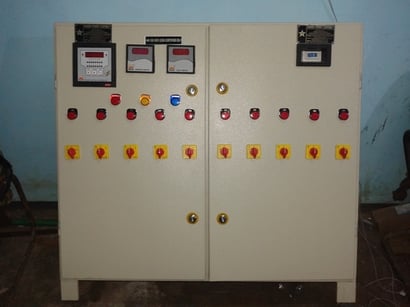What is an Automatic power factor control panel?
[vc_row][vc_column][vc_column_text]Automatic Power Factor Control Panel are mainly used for the improvement of Power Factor. Power Factor is the ratio of active power to apparent power, and it is a major component in measuring electrical consumption.
Function of APFC panel is improving the power factor. Most of the electric load is reactive, resulting in poor power factor. Companies distributing electricity encourage consumers to improve power factor. For improving power factor, electricity consumers have to connect capacitors of optimum rating across inductive load. “PYRO” APFC is an electrical device which is employed to boost the ability factor, whenever required, by switching ON and OFF the desired capacitor bank units automatically.
APFC Panel has microcontroller based programmable controller. Which switches the capacitor banks of suitable capacity automatically in multiple stages by directly reading the reactive load (RKVA) which works in the principle of VAR sensing tends to keep up the PF to 0.99 Lag. In industries, we’ve different types of loads viz. resistive, inductive & capacitive. To improve the facility factor, it’s required to attach a capacitor bank at the LT side of the Transformer. For approximate KVAr of capacitors required. If the installation has various small loads with the mixture of huge loads, then the APFC panel should be recommended.
Capacitor bank:-
Capacitor bank is very essential equipment of an electrical power system. The power required to run all the electrical appliances is the load, as useful power is active power. The active power is expressed in kW or MW. The maximum load connected to the electrical power system is mainly inductive in nature such as electrical transformer, induction motors, synchronous motor, electric furnaces, fluorescent lighting are all inductive in nature.
In addition to these, inductance of different lines also contributes inductance to the system. Because of these inductances, the system current lags behind system voltage. As the lagging angle between voltage and current increases, the power factor of the system decreases. As the electrical power factor decreases, for the same active power demand, the system draws more current from the source. More current causes, more line losses.
If you face low power factor problem





